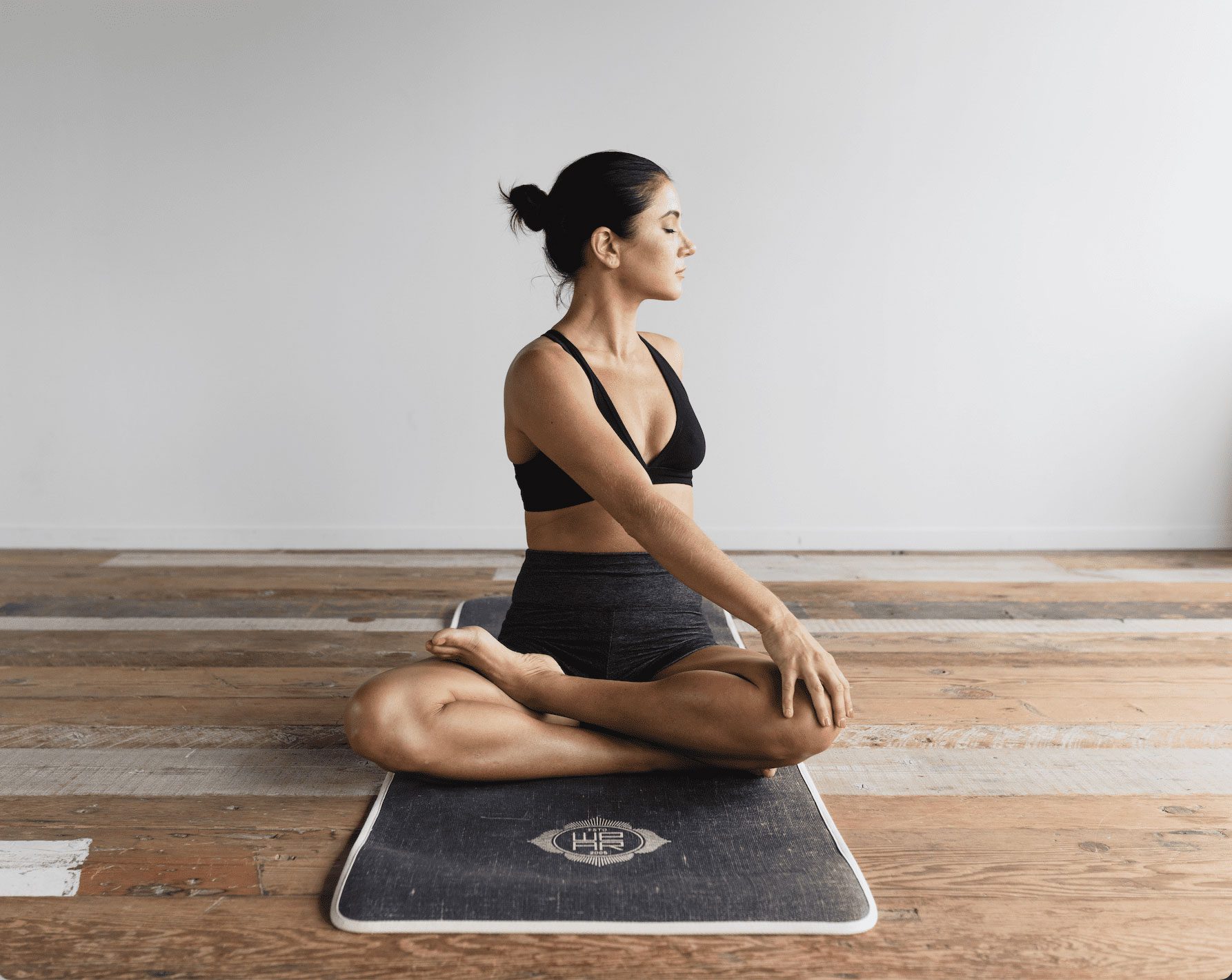Impact of Chronic Pain
Chronic pain is impactful not only physically, but emotionally as well. Chronic pain is linked to stress, which in turn, is linked to lower wellbeing 1. Additionally, while we are still in February, colder weather (for my northern hemisphere readers!) can lead to a flair up in many chronic pain conditions. However, the good news is we can use CBT techniques to help ease some of the stress symptoms associated with chronic pain. CBT can help you be prepared to tackle a flair up and to assist in developing a wellness plan for when a flare-up emerges.
In particular, we can use interoceptive awareness, or the ability to identify, access, understand, and respond appropriately to the patterns of internal signals2 to asses “what do I need?” in the moment. Think of it this way: your body begins a chronic pain flare up, and instead of worrying about “How long will this last?” or “What do I do?” you instead will ask “What do I need to help keep me at ease during this flare-up?”
Preparedness is key. Having a plan for stress management and ways to tackle your chronic pain head will help you and your condition coexist rather than battling against each other in a “stress cycle” which ends up perpetuating the flair-up. Please note, however, you will want to combine these stress management and wellness techniques with primary healthcare and the appropriate specialists in physical healthcare for your chronic pain diagnosis.
3 Strategies for Managing Pain
Here are some strategies you can use to jumpstart deciding what you need to help yourself during a chronic pain flare-up and to build a toolkit of strategies to jumpstart a path of greater wellbeing. Plus, at the end, I will have a freebie for you that puts it all together!
**DISCLAIMER** Please note that the strategies listed below are for assistance of stress management and emotional regulation during a chronic pain flare-up. These strategies are not physical health medical advice. Please consult with your doctor before trying any of these strategies to make sure they will not interfere with your current treatment plan or medical condition. If you have any questions or concerns regarding your chronic pain diagnosis, please consult with your physician.
Chronic Pain Bag
The chronic pain bag is one of my favorite strategies for people with chronic conditions. This strategy can apply to anyone with any chronic pain diagnosis, and not only gives ease of mind through preparation, but also your team of physicians will thank you for having the proper tools on hand.
Essentially, pick a duffel or tote bag (can be a smaller bag if you require smaller-sizes items) you can store in a space when you go out such as when you travel or in the car. If you commute by public transportation get creative: are you allowed an emergency bag at work ? If so you can store medications in your day-to-day bag and then keep the chronic pain bag at work. The same applies to locker rooms if you go to a gym or physical therapy, lockers at school, and an emergency bag at a family member or signiant other’s home.
Once you have picked out your bag and where you will store it, fill it up with the necessities to accommodate your chronic pain condition. Please note that the items in your bag may change with the weather, so based on your condition you may have the bag filled with one set of items during your summer season, and then filled with another set of items during your winter season.
Putting Your Bag Together
In case you forget something when you go out, you have a backup/emergency supply! Use the following check-list to help put together your chronic pain bag. Write down the the one(s) below that apply to you (or keep reading for that freebie!), and add to the list anything else you can think of for your chronic pain bag:
- Scarf
- Gloves
- Hat
- Extra socks
- Umbrella/Rain jacket
- Medication (make sure if you are going to store medication in your bag you first consult with your physician or pharmacist on proper storage of your medication- many medications need to be stored in certain temperatures.)
- Heat inserts for shoes and/or gloves
- Hoodie/sweater
- Shawl/small blanket/throw
- Compression wrap
- Joint cream
- Lotion
- Other:
Warm Temperature Strategies
Warm temperature strategies can be a source of relaxation and provide ease. This is also a good time to take a moment to take deep breaths or listen to a meditation. Being able to nurture your body while also engaging in a mindfulness strategies is a two-front approach for chronic pain management.
When using warm temperature strategies, it is very important to know your threshold. Please note I purposefully use the term warm and NOT hot. Always consult a doctor when needed. Some warm temperature strategies include:
- Turning on the heater in the home or car.
- Taking warm showers.
- Switching to hot tea or coffee (which is great to hold while walking outside!)
- Warming electric blankets (again, consult a doctor as needed, especially if you never used one before).
- Keeping your body warm through massages.
Once you have consulted with a physician and picked a warm temperature strategy that works for you, I encourage you to create a warm, mindful space. Make sure you are dressed comfortably. Try turning on relaxing music (such as jazz or lo-fi) or begin a guided meditation. I encourage you to practice deep breathing (or focusing on your breath if you are unable to deep to deep breathing). Another alternative is as you engage with your warm temperature strategy is to engage with your senses and begin to name the things you can see, touch, hear, and smell in the space you are in.
Daily Well-Being Strategies
- Try and keep things indoors or in environments that you know are less likely to set off your chronic pain.
- Reduce alcohol consumption- I know, this can be challenging during events and parties, but trust me, your body will thank you.
- Get regular exercise. No, I don’t mean going for two hours to the gym each day. Stretches and exercises custom tailored to your chronic pain diagnosis can be very important for your health during the winter. Consult with a doctor (or physical/occupational therapist if you are working with one!) for exercises appropriate for you.
- Take extra time to assess what you need and how you are feeling.
- Don’t be afraid to say no to plans that will set of your chronic pain or things you may say yes to in the warmer weather but will be uncomfortable with in lower temperatures.
Strategy Tracker
Whew! Now that we discussed so many strategies that you can implement, I recommend you take some time, consider them, and try the ones that apply to you. From there you can start to build a toolkit of strategies that work for you.
Now I am sure you are wondering how to keep track of all of this. I have included for you a free, 5” x 7” tracker of all the strategies so you can keep track of what works (as well as what doesn’t!) for you. -> **CLICK HERE** <- to gain access to your free tracker.
Therapy for Chronic Pain
Did you know at online-therapy.com we have a category for chronic pain? At online-therapy.com we have trained, compassionate staff who are here for you via video, phone, and text sessions to support you with where you are and what your needs are. Included in their bio is the ability to signify if the therapist specializes in chronic pain, or perhaps any of your other areas for therapy. If you are interested and would like to learn more about our program, please feel free to check us out at: https://www.online-therapy.com/
References
Abdallah, C. G., & Geha, P. (2017). Chronic Pain and Chronic Stress: Two Sides of the Same Coin?. Chronic stress (Thousand Oaks, Calif.), 1, 2470547017704763. https://doi.org/10.1177/2470547017704763
Price, C. J., & Hooven, C. (2018). Interoceptive Awareness Skills for Emotion Regulation: Theory and Approach of Mindful Awareness in Body-Oriented Therapy (MABT). Frontiers in psychology, 9, 798. https://doi.org/10.3389/fpsyg.2018.00798




Leave A Comment